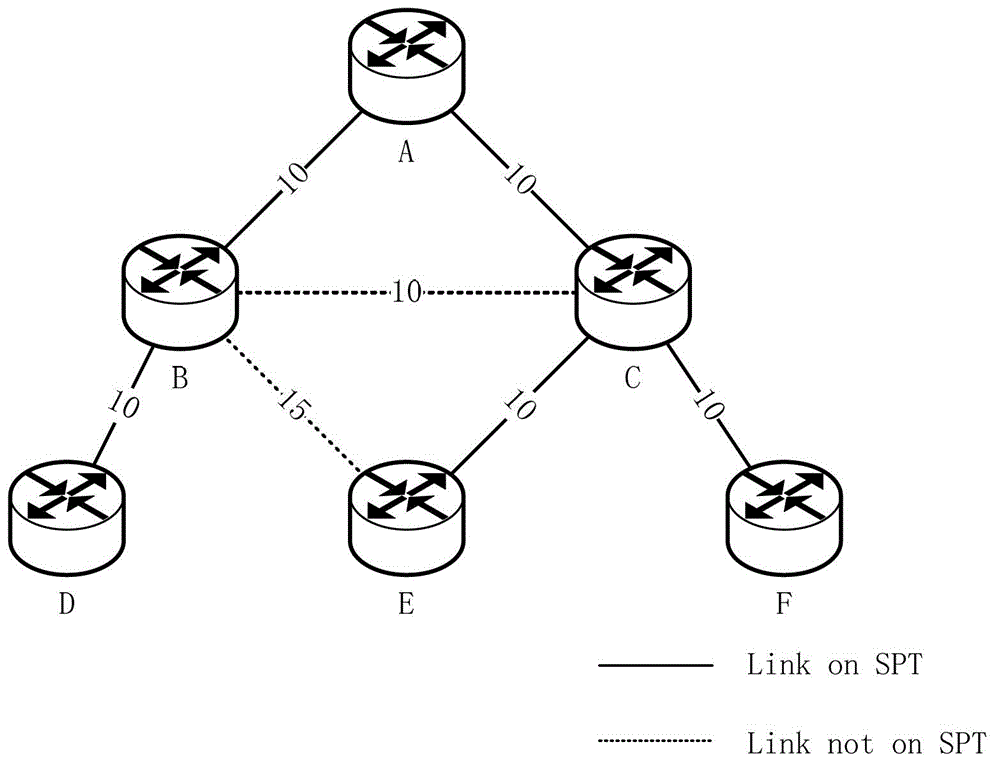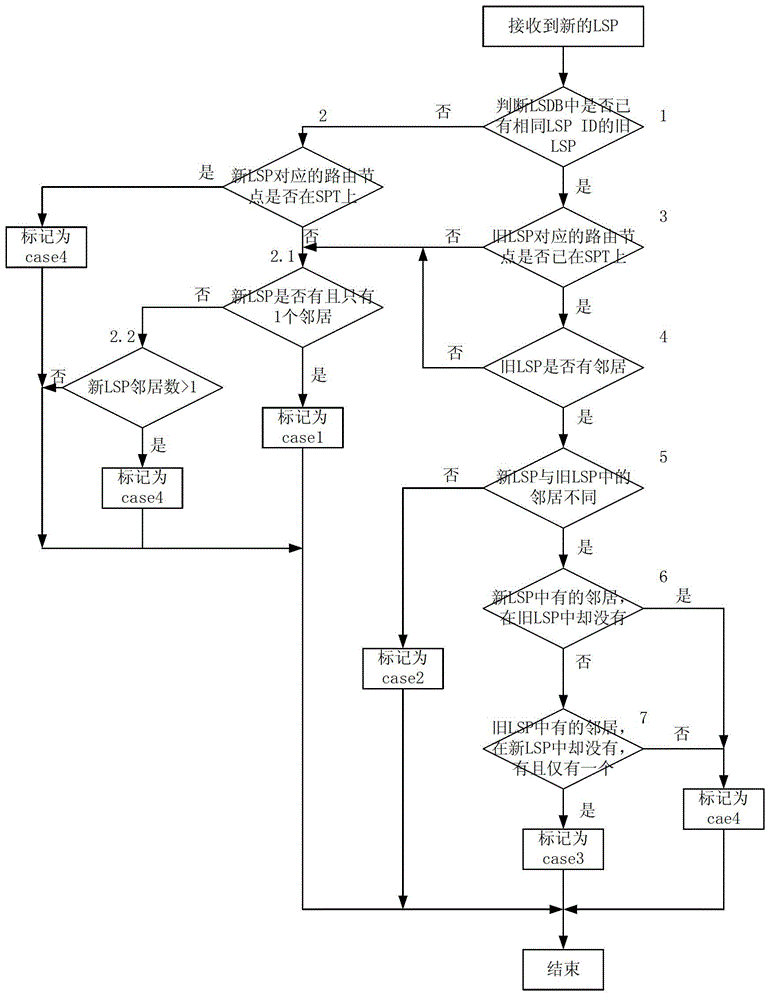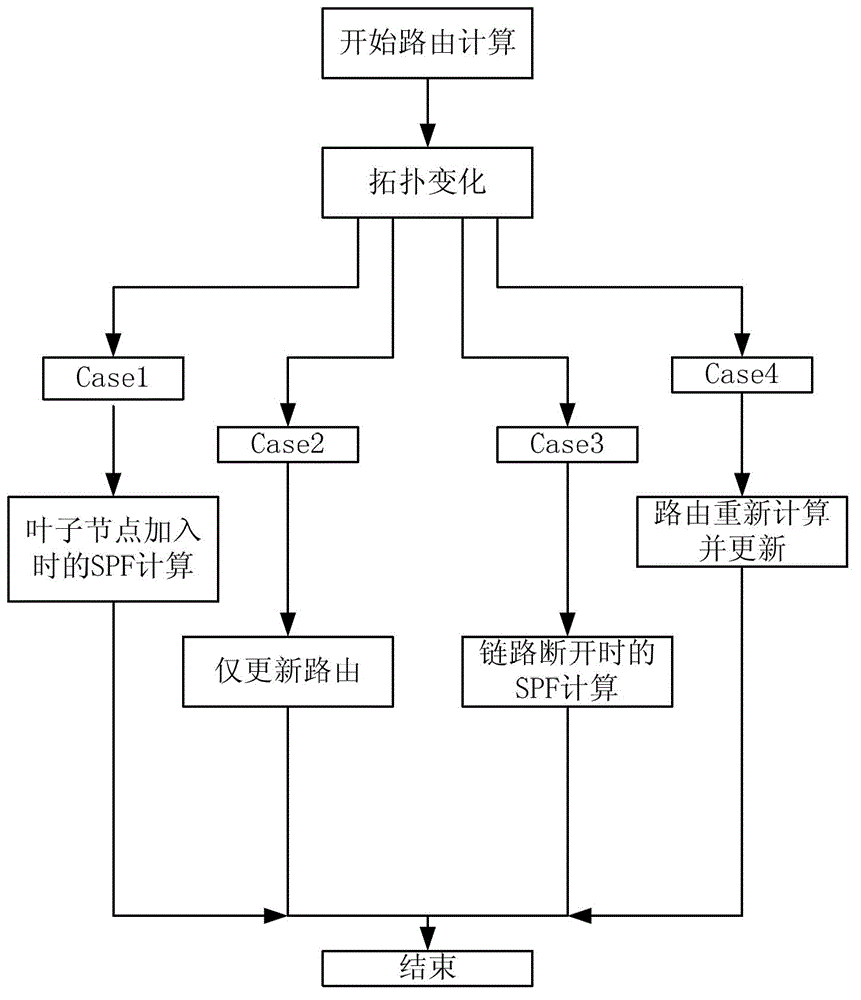Rapid route convergence method
A routing and fast technology, applied in the communication field, can solve problems such as wasting CPU, reducing convergence speed, and inability to selectively process, and achieve rapid topology changes, reduce CPU load, and respond to topology changes.
- Summary
- Abstract
- Description
- Claims
- Application Information
AI Technical Summary
Problems solved by technology
Method used
Image
Examples
Embodiment Construction
[0063] The present invention will be described in further detail below in conjunction with the accompanying drawings.
[0064] The fast route convergence method of the present invention comprises the following steps:
[0065] Step 1, pre-evaluate the changes in the network topology: when any routing node in the network receives a new link state packet LSP, the routing node that receives the new link state packet LSP does not start the Dijkstra algorithm immediately Recalculate the route of the entire topology, but analyze the changes of the network topology according to the current shortest path first tree SPT, link state information database LSDB information and the information of neighbor nodes contained in the new link state grouping LSP. The changes in are divided into the following four categories:
[0066] One is that a leaf node joins the network;
[0067] Second, the network topology has not changed, but some routing information has changed;
[0068] Third, the link...
PUM
 Login to View More
Login to View More Abstract
Description
Claims
Application Information
 Login to View More
Login to View More - R&D
- Intellectual Property
- Life Sciences
- Materials
- Tech Scout
- Unparalleled Data Quality
- Higher Quality Content
- 60% Fewer Hallucinations
Browse by: Latest US Patents, China's latest patents, Technical Efficacy Thesaurus, Application Domain, Technology Topic, Popular Technical Reports.
© 2025 PatSnap. All rights reserved.Legal|Privacy policy|Modern Slavery Act Transparency Statement|Sitemap|About US| Contact US: help@patsnap.com



